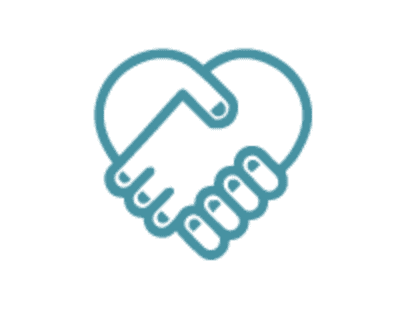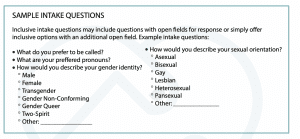
Working With HT Survivors: LGBTQ+ Communities
Overview
In your work with human trafficking survivors, you may encounter LGBTQ+ clients. LGBTQ+ youth are particularly at risk for human trafficking. LGBTQ+ youth make up 40% of the homeless and runaway youth population, and 1 in 3 homeless youth are trafficked within 48 hours of running away.
LGBTQ+ human trafficking survivors may need support services related to their gender and/or sexuality. For example, an LGBTQ+ survivor client may need gender-affirming medical care, or may be concerned about being discriminated against by providers. It is important that your office is trained on LGBTQ+ issues so that you are prepared to serve this survivor population.
Best Practices
Know Your LGBTQ+ Facts
- LGBTQ+ is an acronym that stands for Lesbian, Gay, Bisexual, Transgender, and Questioning (sometimes “Q” is meant to represent Queer). The + sign encompasses all other sexual orientations and gender identities.
- Gender identity is how someone perceives themselves to be: male, female, a blend of both, or neither. A person’s gender identity can be the same or different than the sex they were assigned at birth. Gender identity is not visible. There are many gender identities. •Gender expression is how a person outwardly expresses their gender. This includes what pronouns they use, how they dress, the name they use, and more.
- Sexuality is who a person is attracted to romantically and/or sexually. There are many sexual orientations.
- Pronouns are how a person refers to themselves. People often use she/her/hers, he/him/his, and they/them/theirs, but there are other options too.
Pronouns
- Check with your client about which pronouns to use when making referrals to outside providers.
- Make sure you know who your client is comfortable sharing their identity or pronouns with. Get your client’s permission before noting this information in their file or sharing it with other providers at your office.
- Display your own pronouns in your email signature, on your name tag, or on the name plate on your door. Normalize sharing pronouns in your office to make clients more comfortable disclosing their own pronouns.
- Modify your intake questions to give clients the opportunity to disclose their pronouns, preferred name, gender, and sexual orientation. Check out this example from Polaris:

Community Connections
- Connect with local LGBTQ+ organizations. Collaborate on how to make your office and procedures inclusive, welcoming, and safe.
- Be familiar with LGBTQ+-friendly providers you can refer clients to.
Representation
- Hire LGBTQ+ providers to work in your office.
- Train your staff on LGBTQ+ issues and cultural awareness.
- Remember that your client’s sexual activity in their trafficking situation may not match their gender or sexual orientation. Don’t make assumptions about your client’s identities based on their trafficking situation.
Read more here.

